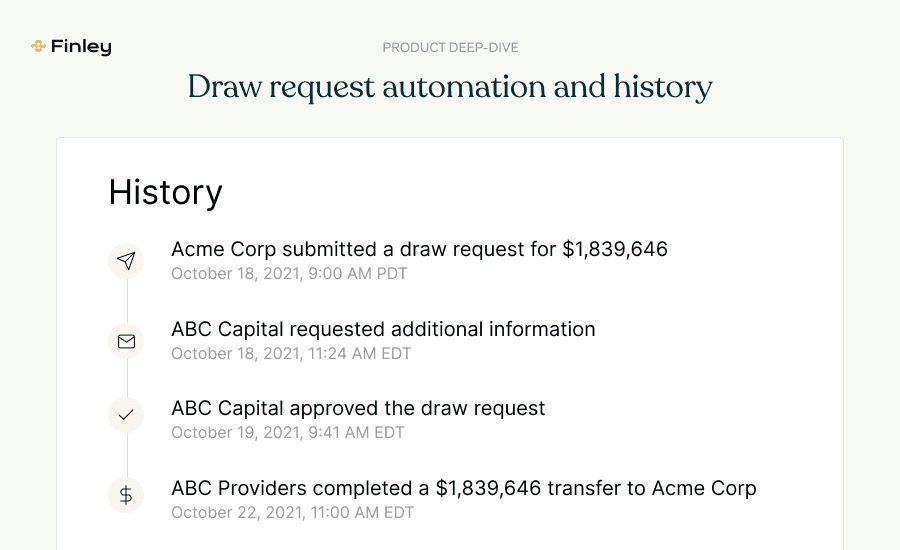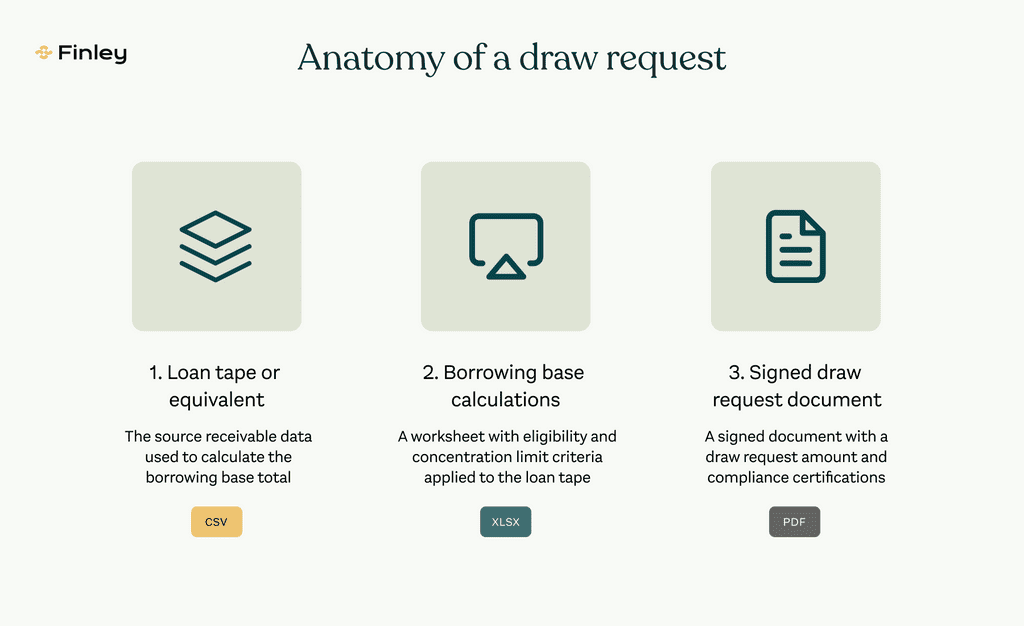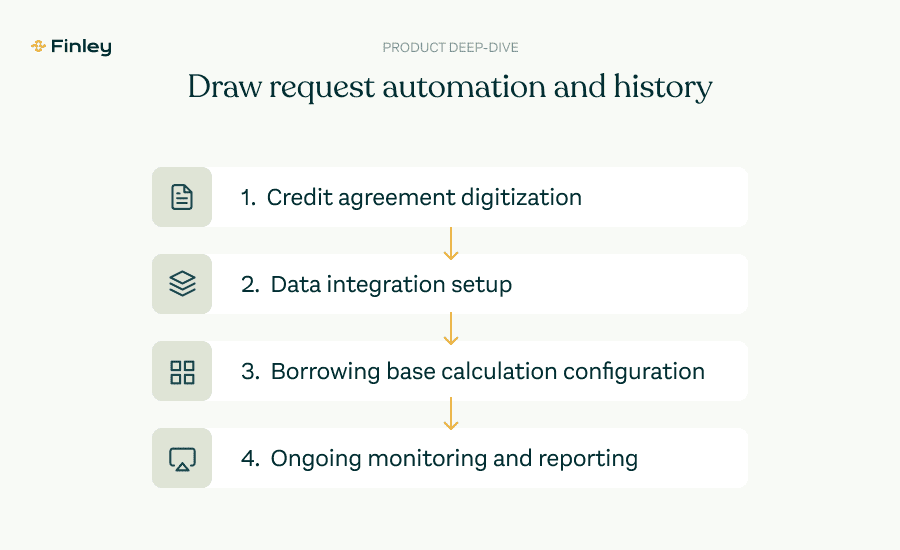What is a draw request?
A draw request is a borrower's request for funds from a capital provider. In our previous draw request overview post, we wrote about how borrowers must assemble draw request packages (usually on an ad hoc basis) made up of loan tapes, borrowing base calculations, and signed agreements when they want to draw on funds from a credit facility.
We also explained which debt capital KPIs borrowers should be tracking, and how keeping track of funding rules like covenants and concentration limits can end up being a full-time job in itself. In that previous post, we focused on the operational challenges of managing draw requests, especially in the broader context of debt capital management compliance.
In this post, we'll provide an in-depth view of how our software automates the routine parts of draw requests from a revolving loan facility, and why having a data foundation for your debt capital is essential for scaling your business' operations, data, and risk functions.

How do draw requests typically work today?
Today, the vast majority of debt capital draw requests happen over email: a debt capital borrower will prepare their draw request package, which includes an up-to-date loan tape and borrowing base calculations, and send it to their capital provider along with a requested draw amount and any other required documentation. The capital provider and any associated agents will review the draw request package, approve it (or ask for modifications), and wire the requested funds.
Having spoken with 300+ debt capital borrowers and 50+ debt capital providers, we haven't heard of draw requests being processed via any method other than email. The key reason for this, traditionally, is versatility. Borrowers can attach any type of loan tape, borrowing base calculations, or documents to an email, and it's easy for both sides to go back and forth if there are questions on a particular deliverable.

The drawback of this approach, however, is that there's no central record of how much a borrower has drawn from a credit facility, and when. Sure, both sides may true up their accounts at the end of each month or quarter, but this exercise often reveals discrepancies between borrower and capital provider calculations of credit facility availability.
To use a consumer finance analogy, it's as if you had to wait until the end of each month to know what your credit card balance was, and when each transaction was made.
How does Finley streamline draw requests?
Our draw request automation and tracking software saves your Finance and Capital Markets teams time, ensures a central record of draw activity, and lets you know how much of your credit facility funding is available at any given time. The four main components of Finley's approach to draw request management are:
1. Credit Agreement Digitization. The borrower-capital provider credit agreement is a legally binding contract that specifies all the terms of a credit facility, from the total amount of credit available to what requirements must be true in order for a borrower to draw from a credit facility.
That's why we begin all customer engagements by digitizing the credit agreement. You can think of the digitized credit agreement as a structured "SparkNotes" version of your credit agreement available within the Finley application.
2. Data Integration. After we've digitized your credit agreement, we set up a data connection between your systems and Finley, usually through a regular or recurring export, to collect the data necessary for calculating your borrowing base and generating your recurring draw requests (e.g., loan data, bank account data, etc.).

3. Borrowing Base Calculation Configuration. With your credit agreement information digitized/structured and your regular data export to Finley successfully set up, the final step left in configuring automated draw requests is working with our Capital Markets and Engineering teams to make sure that Finley is able to generate all the figures and reports that your capital provider expects to see, while also storing this information in a format that can generate a draw request ledger and up-to-date data visualizations in our application.
That means, for example, that your borrowing base report for October 1, 2021 would be available as an XLSX or PDF to your capital provider but also visible as part of a draw request history or time-series analysis within Finley.
4. Ongoing Reporting and Monitoring. With automated draw requests set up, the key benefit of Finley (apart from saving you time on manual collection of data and draw request generation) is the ability to use the same credit agreement and asset data that we've collected in the process of setting up draw request automation to monitor your funding KPIs (e.g., advance rate), ensure ongoing covenant compliance, and enable proactive alerting on debt capital management todos. We'll explore these use cases further in future posts.
Want to learn more?
Streamlining draw requests is a key part of making sure you're getting the most out of your credit facility. If you're still processing draw requests manually, it can be easy to fall short of your compliance obligations. Leveraging software designed to automate draw requests can help ensure your company always has access to the funding it needs.
For a full product overview, check out our Product page. If you're interested in learning more about how our software can help you scale your capital markets function, just schedule a demo or take a self-guided product tour. We'd love to chat!